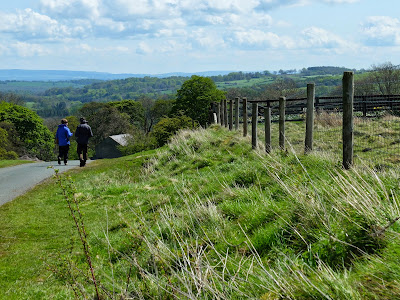We spent time over the past couple of weeks gathering input on our mobile app to finalise its development. Feedback from the various stakeholders of the app was a little thin on the ground, but the responses we did get were not too problematic. For example, it was commented that the app had a lack of some visual clues as to where the user was in relation to the site of Breary Banks (notably the Memorial). But if you've ever been to the site before, you'll know that the memorial is palpable in terms of how to orientate yourself. Other minor issues raised included the need for some definition in the audio and whether the app would have worked in a portrait orientation. I disagree with the last bit of feedback, as the visual imagery especially, needed to be landscape to get the full effect and because it is first and foremost an audio guide, visitors will probably expect something slightly different to a standard mobile app. So, nothing to worry about so far...!
We fixed the app in line with this feedback, and from there we went on to set up the year-end exhibition, Sense Of Community. We drafted a Press Release, which was published on the Archaeology Department's website. And we designed and printed a programme for the exhibition to accompany our posters and social media advertising.
Announcing the @UofYArchaeology first-year exhibition, on Thursday 11th June in King’s Manor, York - ALL WELCOME pic.twitter.com/P6XGaV6pg7
— Archaeology UofYork (@UofYArchaeology) May 12, 2015
We set up a voting station for visitors to vote for the winners of the best digital presentations for the sites of both Star Carr and Breary Banks. The morning of the exhibition was put aside to set up the room (which included moving a rather large horse skeleton from the room...) and to go about the grueling task of making sure every computer/laptop/iPad/headphone was working and had the correct presentation on it! By this time I had seen every panel at least twice, but 4pm came quickly and the room was filled with people eager to see what this year's exhibition entailed. The event was a huge success with positive comments for everyone's hard work and nearly 260 votes cast for the winning presentations. It was also nice to be able to catch up with the rest of the students in the blazing hot sunshine and wish them a great summer.
This is a screen recording of use of the audio guide which has been uploaded to YouTube. In the future, Archaeology and Heritage Students will be adding to it and making it more accessible as an actual app for mobile devices. In the first instance, this was a proof of concept, and we're happy to report that it's been a successful endeavour.
For those of you out there who would like to view the recording of the app in use, here is the link:
And finally, thanks to all of you around the world for reading this blog. I hope you've got a glimpse into what it's like for a first-time student to experience working in the Heritage Sector, and why not visit Breary Banks one day? (Although, maybe in the Summer because you've probably guessed how unpredictable British weather is!) :-)









.JPG)







.JPG)
.JPG)